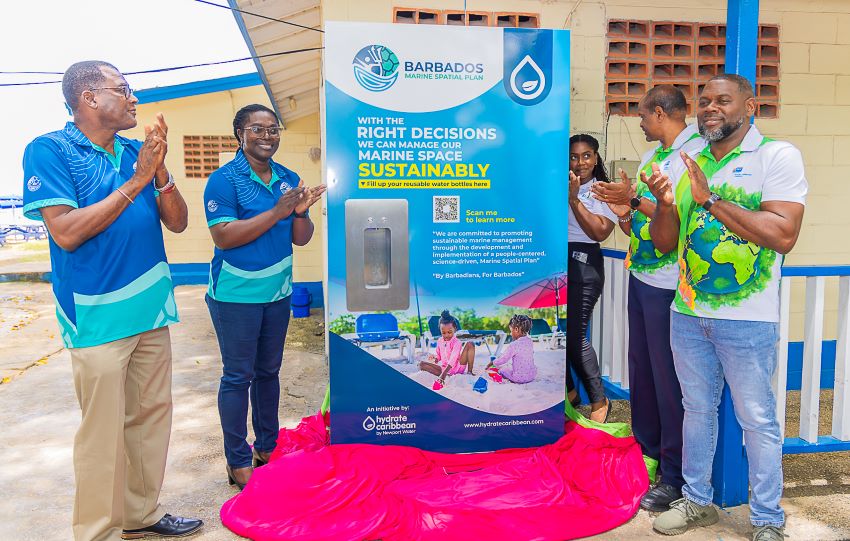
The Barbados Marine Spatial Plan (Barbados MSP), Newport and the National Conservation Commission (NCC) recently launched two new hydrate water stations.
These stations have been strategically placed at Brandon’s Beach and Browne’s Beach, which are both located in St. Michael and frequented by scores of Barbadians and visitors alike.
“We are delighted to partner with Newport and NCC to install these stations and provide free access to clean drinking water to help reduce plastic waste, contributing to both community health and the protection of Barbados’ precious marine ecosystems,” said Director of the Coastal Zone Management Unit, Dr. Leo Brewster, who is also overseeing the Barbados MSP process.
The Hydrate Water Stations are part of a broader effort to integrate sustainable practices into the everyday lives of both locals and visitors. By providing free, easily accessible water stations, the Barbados MSP, Newport and NCC are encouraging beachgoers to stay hydrated while minimizing their reliance on single-use plastic bottles.
“Through thoughtful planning and innovative strategies, we at Newport have used the Hydrate Caribbean programme to promote environmental sustainability. The Barbados Marine Spatial Planning Unit brings invaluable expertise to this initiative. By placing water stations at key beach locations, we’re taking a crucial step towards reducing single-use plastics, minimizing waste, and promoting healthier, hydrated communities,” said Sales Coordinator at Newport, Sheridan Greaves.
The first two water stations sponsored by the Barbados MSP are now operational at two of Barbados’ most beloved coastal spots. The Barbados MSP team aims to expand this initiative to other key locations in the coming months to ensure that the benefits of clean, free drinking water are felt island-wide, and that the messages about responsible practices in the marine environment traverse the length and breadth of Barbados.
Dr. Brewster emphasised that the “water stations are a part of our 360-degree public outreach and visibility approach to ensure that we promote sustainable practices, raise awareness about MSP, educate the public, and encourage them to get involved in creating the marine spatial plan”. He added: “Each station will have key messages with information on the Barbados MSP, a QR code to scan and obtain further information, as well as links to our digital platforms where the public is encouraged to engage with us. These stations quite seamlessly reflect our commitment to balancing development with environmental stewardship.”
For more information on the Barbados Marine Spatial Plan, please visit www.barbadosmarinespatialplan.com.
